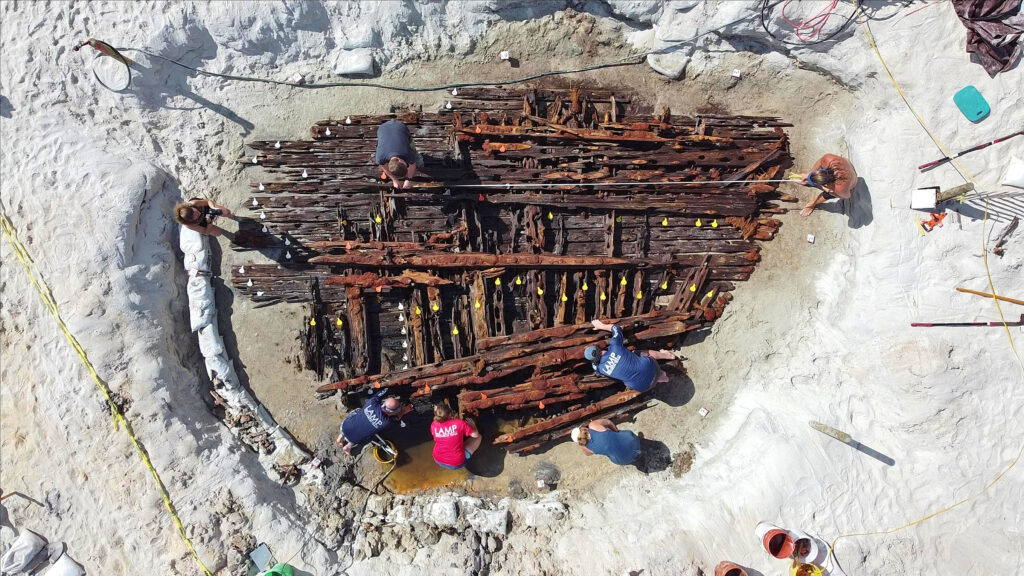
Florida (United States)
‘Skeletons of Foundered Ships:’ Beached Shipwrecks of St. Augustine, Florida, America’s Oldest Port
Dr. Chuck Meide (Lighthouse Archaeological Maritime Program)
In 1784, Johann Schoepf, a German surgeon in the British Army, visited St. Augustine and wrote a lurid account of the dangers of its coast to ships. He noted that “[w]ithout the least overstatement I daresay that every 100 paces, almost, the skeleton of a foundered ship, or its wreckage, may be seen.” Today, the remains of these lost ships are not so obvious to visitors on the beaches surrounding St. Augustine, now a premier heritage tourist attraction which draws millions of beachgoers. Yet the structural remains of wooden-hulled shipwrecks do regularly emerge from the sand here, usually in conjunction with storm erosion associated with hurricanes or nor’easters. A wide range of such ship remains have been documented by the Lighthouse Archaeological Maritime Program (LAMP), which serves as the research arm of the St. Augustine Lighthouse & Maritime Museum. These include the Vilano Beach rudder, from an 18th- or 19th-century vessel, the Blowhole Wreck, comprised of the keel and bow of an early to mid-19th-century vessel, the Bond-Wheeler Wreck, a portion of the bow of a 19th-century ocean-going vessel, the Spring Break Wreck, a large section of a 19th-century vessel, the Ponte Vedra Wreck, believed to be a late 19th-century coasting schooner, the Crescent Beach Wreck, believed to be the bow of the Caroline Eddy wrecked in 1880, the Ponte Vedra Shrimp Boat Wreck, a commercial fishing trawler ca. 1930-1960, and the schooner Deliverance, built in 1896 and stranded in 1947. This chapter summarizes these sites and LAMP’s ongoing efforts to investigate and monitor them.
Image: Crescent Beach wreck (Photo: Lighthouse Archaeological Maritime Program)